Social media platforms leave clues. And when every social media platform is leaving the same clue (to focus on vertical video), Marketers should really take note.
That is happening with vertical video right now. If you create content or use social media at all, it’s vital you listen to this episode & implement a vertical video first approach.
The advice shared in this episode helped us increase views by 507% & watch time by 319% in 30 days. This is honestly one of our best episodes for a while.

Kallum 0:00
Hi, Kallum here. I know you’re expecting Pat the Podcast Editor, but I’ve been editing the podcast for months now, and you’ve all been living a lie. Anyway, in today’s episode, Dan and Lloyd talk all things vertical video and why you should start shooting content with a vertical first approach.
Dan 0:14
If Instagram is optimising the platform for vertical video, they want you as a creator to produce vertical video. And they’re going to reward you for doing that by giving you more reach and engagement.
Kallum 0:25
And Dan shares some pretty impressive statistics from a month of vertical short form content on their Business Anchors YouTube channel.
Dan 0:32
From June 28 to July to July 27, 30 days, we got 11,700 views on our channel, which is a 507% increase from the previous 30 days.
Kallum 0:44
So there you have it. Short Form vertical content is becoming the king of all social media platforms. Get ready for more compelling vertical facts, jokes, and laughs. This is episode 106 of the Business Anchors Podcast.
Lloyd 0:56
Why is having a vertical video first marketing approach vital to anyone producing video in 2022? Dan?
Dan 1:16
Good question. Lloyd.
Lloyd 1:17
Thanks. And welcome back to the podcast.
Dan 1:19
Good. Well, social media platforms leave clues. And what I mean by that is, if you look at the types of content social media platforms are trying to encourage you to create, you can start to understand the types of content you can create that’s going to generate the most organic views and engagement. Because, say, for example, Instagram.
Lloyd 1:40
Yeah.
Dan 1:40
If Instagram is optimising the platform for vertical video, they want you as a creator to produce vertical video, and they’re gonna reward you for doing that by giving you more reach and engagement.
Lloyd 1:52
Got it. So it’s easy then, isn’t it?
Dan 1:56
Yeah, we’re gonna go into more detail than just that. But the simple thing is, if you can understand the signs of social platforms, trying to encourage you to create certain types of content, you can then just create the content they want you to create and get more reach. The simple way of looking at it is social platforms are constantly bringing out new features, and changing. And one of the simple ways you can get the most reach and engagement with your content is to just use their latest features.
Lloyd 1:56
Yeah, okay.
Dan 2:03
Like, I don’t know, if you remember, when Instagram brought out Instagram Live. When you when you went live on Instagram, when it was new, you could literally get 1000s of people watching your lives, even if you only had a few 100 followers, because they wanted to encourage creators to use that.
Lloyd 2:43
So I suppose the social platforms have got whatever goals that they have behind the scenes. And they’re going to be putting new features in front of people or changing things. And they’ve got, like I say, they’ve got their own goals and things they’re trying to achieve. And to, to make sure that they achieved those, you just got to do what they want to basically yeah, they’re gonna be putting that stuff in front of more people and giving you an easier route to success.
Dan 3:11
And the even bigger clue is when multiple social platforms are giving you the same clue. Like so if you think about this, so, again, the theme of vertical video, so TikTok, TikTok is a platform that’s fully immersive that’s built for vertical video.
Lloyd 3:31
You can’t, you can’t not do vertical video.
Dan 3:33
Yeah, you literally.
Lloyd 3:34
I’ve seen some people try, but it doesn’t work.
Dan 3:36
Yeah, you literally open the platform. And it’s a fully immersive platform, where it’s a vertical video that takes up all of the screen. And instead of your traditional newsfeed where you’re scrolling through lots of square and rectangle videos and pieces of content, it’s all fully immersive. And it’s like a swipe up swipe down user interface.
Lloyd 3:56
I saw I remember a couple of days ago, I saw someone try not to do a vertical video. They had a horizontal video and at the start, it said, Turn your screen.
Dan 4:04
No, never do that.
Lloyd 4:05
I thought, nope. It’s weird. Isn’t it? Like just doing that, you’re like… That’s yeah, that’s more complicated than I’m willing to…
Dan 4:14
Exactly.
Lloyd 4:15
To do. Yeah.
Dan 4:15
So TikTok is giving you the clues by creating a platform that’s literally built for only vertical video. Then we have other platforms like YouTube. So Lloyd, have you seen YouTube shorts on YouTube?
Lloyd 4:28
Yeah, I’ve seen some great YouTube shorts from the Business Anchors Podcast YouTube.
Dan 4:33
Exactly.
Lloyd 4:34
Yeah.
Dan 4:34
So YouTube shorts is basically YouTube’s knockoff version of Tiktok. They’ve bolted on to the platform. And again, they’re really trying to encourage creators to produce YouTube shorts by rewarding them with lots of organic views and engagement like we’ve been seeing. I’m going to share some of the specific data and results we’ve achieved by creating a vertical video in a second. But there’s also LinkedIn. So we run lots of LinkedIn campaigns for our clients. I’ve noticed, I don’t know, if you seen Lloyd in LinkedIn ads manager, they come up with suggestions sometimes like, oh, you should make this slight tweak to improve results. One of the notifications I saw in the last couple of weeks is vertical video performs better within ads. So make vertical video. So it’s…
Lloyd 5:20
So yeah, because I think a couple of the platforms people might still be clinging on to to go to be saying like, Oh, no, we’re not gonna go vertical. Because, you know, we need it to work for LinkedIn, or Facebook. Now, even I saw last week Facebook have announced that within their app, it’s going to be the main focus is going to be on Reels when you first open the app. And then you can get to the other stuff by pressing something different. But again, the focus is going to be there. So those are the platforms that you might be going oh, no, no, well, most of our customers on Facebook and LinkedIn, so we can’t do vertical video. We’re not gonna do TikTok, we’re not lipsyncing girls that was in 2017.
Dan 6:01
Can I can I tell you a really interesting statistic that, again, reinforces why everyone should have a vertical video first.
Lloyd 6:07
Only if it’s really interesting.
Dan 6:08
It is.
Lloyd 6:09
Okay.
Dan 6:10
Okay, actually, I’m gonna ask you, I don’t know if you’ve seen my notes. So don’t know if you know this or not without looking.
Lloyd 6:13
No, I don’t read your notes, they’re boring.
Dan 6:15
Okay, good. What percentage of social media users do you think exclusively access social media through mobile? So only access social media through mobile?
Lloyd 6:26
I think, quite a high percentage. I would say like 61%.
Dan 6:32
78%.
Lloyd 6:34
That’s a really interesting statistic.
Dan 6:37
So again, if you think about that, that’s another clue that’s like, mobile phones are rectangle; sidewards rectangles.
Lloyd 6:47
Vertical?
Dan 6:48
Vertical, they’re vertical rectangles. So again, keeping it simple. You should be creating video that is suited to that size screen.
Lloyd 6:58
Dan, Dan doesn’t say I’m going to call someone on my phone. He says, I’m going to call someone on my vertical rectangle.
Dan 7:03
Exactly.
Lloyd 7:04
Yeah, because that’s what it is.
Dan 7:05
So all of these clues, as a marketer we should be keeping our eye out for and thinking, Hmm, literally every social platform, is optimising the way it serves you content for vertical video, maybe they actually want us to create vertical video. And the reason this is really important is if we understand what the social platform wants us to create, like I mentioned a minute ago, they will reward us for creating that content by giving us more organic reach, reaching more people, which in turn is going to drive more engagement. And it’s going to help us as a business, get in front of more of the right people and ultimately sell more of what we’re trying to sell and grow which is most businesses key objective.
Lloyd 7:46
So I think I know what you’re telling us to do now.
Dan 7:48
Yeah, okay.
Lloyd 7:49
Sounds like you’re quite keen on vertical video.
Dan 7:52
Yes.
Lloyd 7:52
Because it’s gonna get get businesses better results, people better results and more reach and anything they want to achieve, basically. So I guess as an example, for our for our business at Knowlton, have you got sort of an example of how we have adapted our social strategy?
Dan 8:11
Yes.
Lloyd 8:12
For this kind of thing?
Dan 8:13
Yes, I have.
Lloyd 8:14
Good.
Dan 8:14
So every few years, we tend to make some kind of monumental shift in the way we market ourselves because of the changes in these platforms. So previously, we’ve had quite big shifts in the platforms we’re using to reach our customers. Like we always mainly used to use Facebook to drive new business, we literally never really drive any business from Facebook now compared to other platforms like LinkedIn, and Tik Tok and that kind of thing. The most recent shift is having a vertical video first approach. So the specific things we’re doing to have a vertical video first approach; one is shooting most of our content in a vertical format.
Lloyd 8:53
I was just gonna say there’s two cameras pointing to us that aren’t the traditional angle that are cameras usually.
Dan 9:00
Exactly. So we now when we when we knew we were making this change to vertical video, we spoke to the production team and said, We want all our videos to look brilliant in a vertical format. So there’s been specific changes. For example, this exact video now this is very meta, but we’re shooting our podcast we used to shoot have a wide angle camera, and then two close up cameras on us that were
Lloyd 9:25
Landscape
Dan 9:25
Landscape. Now we just have a close up camera that’s vertical, and we’ve optimised the scene and the setting and the lighting to work best for this vertical.
Lloyd 9:35
And I remember when you first said that, like No, we just we’re just going to shoot it vertical. I think all of us kind of, it was it was almost like what? no! Like defensive of like, we were clutching at
Dan 9:48
Landscape!
Lloyd 9:49
Reasons like we have to do it the other way. And I think in the end we realised I suppose there isn’t a good reason anymore to do that, but it did feel strange. But obviously as we’ve seen, since we’ve done that, it’s been worthwhile.
Dan 10:03
Yeah,
Lloyd 10:03
I assume.
Dan 10:04
Yeah, I’m gonna share those results in a second.
Lloyd 10:06
Okay.
Dan 10:07
But there’s some other there’s some other things we’re doing so, specifically for the podcast, which is a big part of our content strategy, everything is optimised for vertical video. In addition to that, the other types of content, we create the entertaining sketches and kind of skit videos that you’ve seen we optimised for vertical video first. So when we’re shooting those, we’re focused on that. Also, just one point, I guess having a vertical video first approach doesn’t mean everything, everything has to be vertical. So for example, we still share the full videos of these podcast episodes as landscape on the main YouTube channel. But we found a clever way of doing that. So you may think, Oh, if you’re just shooting two vertical shots, how do you make it landscape? Well, we do a split screen of our shots to square kind of visuals.
Lloyd 11:01
We still sleep horizontally when we go home don’t we?
Dan 11:04
We do yeah!
Lloyd 11:05
We tried it vertically, but just weren’t getting
Dan 11:07
Didn’t really work.
Lloyd 11:08
Yeah.
Dan 11:10
Great addition, Lloyd, thanks.
Lloyd 11:11
Thank you.
Dan 11:12
So some of the anchors may be watching and listening and thinking, Oh, Dan loves vertical video, but is it actually worthwhile changing everything we’re doing to vertical video. And, for us, it has been so far. And dramatically, the data shows that and I just want to share some of those stats with you just to again, reinforce why this is such a powerful thing to do to get better results for your, from your content.
Lloyd 11:37
Give us some data Dan.
Dan 11:39
So YouTube, traditionally YouTube has really hasn’t been a platform we’ve really focused on for our business, it’s sort of just been somewhere where we put stuff. And you know, it’s there and accessible. And but we thought, you know, let’s, let’s put a bit more resource and effort into trying to improve this. So going with vertical video first. So what we now do with our podcast, we now cut shorter under one minute clips for YouTube shorts. And we’re posting around five YouTube shorts a week.
Lloyd 12:13
Okay.
Dan 12:13
So short clips of us saying good stuff that are for YouTube shorts. Now. We started this vertical video approach first on June 28.
Lloyd 12:22
What a day.
Dan 12:23
So I’ve tracked the data for a month since June 28, compared to the previous month of not having this vertical first approach. Now just to say as well, our Business Anchors YouTube channel is very new. So we literally started it a few months ago. So we only have like, under 100 subscribers. So this is basically a completely..
Lloyd 12:43
Why aren’t you subscribed yet?
Dan 12:45
Go and subscribe to that channel
Lloyd 12:46
If this is in your ears or in your face go and subscribe to the YouTube.
Dan 12:49
So we don’t have a really following on there compared to the other other platforms. But from June 28 to July to July 27, 30 days, we got 11,700 views on our channel, which is a 507% increase from the previous 30 days.
Lloyd 13:07
That’s and that’s real data.
Dan 13:09
That’s real data, also more real data, we had 67.1 hours watch time on our YouTube channel. That’s a 319% increase from the previous 30 days.
Lloyd 13:20
That’s that’s also a big number.
Dan 13:23
So that’s just YouTube. Okay, and this is just us initially testing this for for 30 days. TikTok. So, when we started this vertical video first approach, we started sharing vertical videos on TikTok. So from the 28th of June to July 27. We got 431,000 views on TikTok on our vertical videos. It’s 13,000…
Lloyd 13:46
Biggest number yet.
Dan 13:47
Yeah, exactly 13,875 profile views, over 20,000 likes almost 2000 comments, 2522 shares, 2929 new followers in that 30 days just from focusing on posting these vertical video clips.
Lloyd 14:04
And it’s not not as big of a number. But we’ve had four or five comments about how good my beard is. Some things you know, you can’t just look at the big numbers and the data. Those are the important details.
Dan 14:18
Who is it? Someone you were literally smiling ear to ear for a whole day because someone commented saying they’ve got like a fan girl crush on you or something.
Lloyd 14:27
No, it wasn’t smiling ear to ear all day. Oh, yeah, I remember one of those. Yeah, there’s been a few. Yeah.
Dan 14:36
Yeah.
Lloyd 14:36
So…
Dan 14:37
People like the beard, Lloyd.
Lloyd 14:38
There’s more benefits than just Oh 431,000 people saying good stuff about me.
Dan 14:43
Stroking Lloyd’s ego.
Lloyd 14:44
Yeah.
Dan 14:46
One, let me just give you a little bit more data because I know you really want some more data.
Lloyd 14:49
Yeah, I would love that.
Dan 14:50
So another one another platform LinkedIn.
Lloyd 14:52
Yeah.
Dan 14:52
So LinkedIn is one of the places we drive most of our business from. So this is data from my personal profile. So from June 28th to July 27,
Lloyd 15:02
Always the same.
Dan 15:03
We had 557,586 views on our content, which is a 243% increase since we’ve started going vertical video first.
Lloyd 15:13
This, it sounds like you’ve made these up because they’re also positive.
Dan 15:17
No, no, honestly, this is why we’re doing a podcast episode on it, Lloyd.
Lloyd 15:20
Yeah, it makes perfect sense, actually, yeah.
Dan 15:23
5981 likes, which is a 284% increase from the previous 30 days, 1413 comments, which is a 72%, increase, 76 shares, which is a 204% increase. So again, I’m not going to keep throwing numbers at you. But on every platform where we’ve started optimising for vertical video first, the impact of how many people we’re reaching, and how many people are engaging, which is a key part of us convincing people to work with us as a business has dramatically increased.
Lloyd 15:50
It’s interesting, because I’m trying to think of reasons why businesses wouldn’t do this. Because in my mind, it’s like, well, you know, it’s worked for for our business, but you know, if you’re the owner of a golf club, you know, you’re not, and I’m thinking, Oh, no, the golf club members are still on the same platform. They’re still and and also the platform’s changed in the future, say, a platform changed and it’s like, oh, vertical video is rubbish. I should never have listened to Dan horizontal videos, you can just change back. Yeah, it’s not like, because it feels like such a big shift. I think. That’s why people aren’t shifting. They’re like, what now we’ve always done it this way. And it’s a massive part of the content they create.
Dan 16:50
Well, I don’t want to be one of those marketers that just says something works for us. And you should do it too. It’s definitely gonna work for you. But what I will say is, it’s definitely worth testing.
Lloyd 17:00
Well, also, it’s not just working for us. It’s working for all our clients.
Dan 17:02
Yeah. Okay. So all right.
Lloyd 17:04
There’s not just one example.
Dan 17:05
Yeah. But again, you know, sometimes like, if a person says, Oh, this is work for me, so you should do it. It’s worth testing.
Lloyd 17:13
Well, it’s yeah, it’s on all of the platforms are basically all the social platforms are pushing vertical video, even LinkedIn, which is the one that you probably think wouldn’t be like Dan said, There’s notifications popping up saying that your vertical video works better. Like there’s no excuse, unless you’re on some kind of social platform that I haven’t heard of. There’s there’s no reason not to at least try it.
Dan 17:35
Yeah. Yeah. And again, this is why I wanted to make a podcast episode on this, because it’s having such a positive impact on us and our clients marketing. Honestly, just try it.
Lloyd 17:48
In a way it’s surprising. it’s taken this long, because for years now, we’ve been mainly consuming social media on a on a mobile device that is normally held in a vertical format.
Dan 17:59
Yeah.
Lloyd 17:59
It’s surprising, it’s taken this long for actual for the platforms to actually go down that route of making it fit the screens.
Dan 18:06
Do you know what I think the start of the shift in this was like the start of this happening was? It was back in, I think, is about 2007, or 2011 2007, when Snapchat came out, and they brought out a social platform that blew up, there was a completely unique interface that no one was used to. So traditionally, on platforms like Facebook and Instagram, and every platform LinkedIn, you have a newsfeed where you scroll through posts from people in your in your feed.
Lloyd 18:38
Yeah.
Dan 18:38
Whereas when Snapchat came out, it was a fully immersive screen, where you swiped up, down, left and right. And it took you to a full screen of content, rather than lots of different different bits of content that you scroll through.
Lloyd 18:51
Yeah.
Dan 18:51
That was the start. And then that grew. And then Instagram kind of brought out Insta Stories, which is a fully immersive platform. Then they brought out reels, then Tik Tok blew up, then YouTube shorts, and it’s all just going in that direction. So there literally couldn’t be any more clues out there that creators, marketers and brands should be creating vertical video first, over any format of video.
Lloyd 19:14
I suppose it’s not like we’re majorly ahead of the curve. And we’re like, do this radical thing. Like do this thing that they were clues in 2011 to do. It’s just basically now is the point where it’s a complete no brainer. Like if you’re not doing this, it doesn’t make any sense. Now, it’s hard to argue against it.
Dan 19:31
Yeah. And also just on the on the topic of tick tock and vertical video. I think other social platforms should be concerned like like Facebook, because of how much you get rewarded for creating vertical video, through views and comments and engagement and website traffic through platforms like Tiktok. It’s starting to become a no brainer to move your attention and your marketing resource away from platforms like Facebook, where you get sod all, to platforms like TikTok. And I recently saw it, Facebook for the first time actually started losing money. And advertisers are moving away from the platform because of that.
Lloyd 20:14
And I was when I saw that their revenue decreased for the first time, I was surprised. And then I thought of the work we’re doing with clients. And I was thinking, we actually we’re spending less money with Facebook, and we’re spending more money more clients money than ever on TikTok and LinkedIn. So it is completely in line with what we’re experiencing.
Dan 20:31
It’s funny how they’re trying to claw it back now by saying, oh, we’ll change the whole home feed to stories.
Lloyd 20:31
Yeah, no we were gonna do that anyway, you can do that here as well. Its really good, honest, yeah. Okay, so what… Obviously, we know now vertical video is really good. You’ve said lots of large numbers, which proves it’s good.
Dan 20:51
Yeah.
Lloyd 20:52
What actions do you think people should be taking now if the you know, if you’re a marketing manager and a brand, or you’re an owner of a small business, what what the actions that they should be taking?
Dan 21:01
So just focus on producing your content in a vertical format first, before any other kind of content style.
Lloyd 21:10
And then you don’t need to listen to Dan, you can see it with your own eyes, that you’re getting better results. And then you can send a message to us saying, Oh, my God, you were right. We’ve just done a 30 day test. And we’ve made so much money, and we’re so successful.
Dan 21:22
Exactly.
Lloyd 21:23
Yeah.
Dan 21:23
And like, I think there’ll be quite a few people and marketers listening that may be scared to put this forward to their CMO or head of marketing, because it’s quite a dramatic shift in the way you do things. But doing a test is a low risk way. As marketers, we should always be testing different things, position it as that. I want us to do a small test to see…
Lloyd 21:44
I think there are a lot of marketers in that position, they know it’s the right thing to do. Like, I think they already know it. They just need like people like us to be like, come on, you need to do it now. Because we were like that for a long time. Like you could see all of the signs, but we were still shooting stuff. Firstly, for landscape and then adapting it to portrait and stuff. And it’s, yeah, it because it’s such a big shift. It’s going to take some persuading. But I think most of us know, it’s the way to go now.
Dan 22:12
Yeah, so put, so do that test. And secondly, make sure you’ve got everything and all the Analytics set up so you can monitor the performance of how that test goes. So for example, if you’re doing this on TikTok, you probably want to shift your account to a business account, because you have much more in-depth analytics to actually look at the watch time and and everything behind the scenes. So yeah, make sure you’ve got the Analytics set up, make sure you know what the kind of data you’re going to be tracking, things like in YouTube shorts, we haven’t just been tracking views, because the shorts videos are under one minute. So they’re much shorter than our normal 30 minute long YouTube videos
Lloyd 22:56
So that could deceive you. It could be like, Oh, I’ve had loads of people watching. But it’s different watching a one minute video to an hour video.
Dan 23:01
Exactly. So the second metric we’re definitely keeping an eye on is watch time is total watch time, which again, like like I said, has gone up like 243%. So although we get we’re getting lots more views on shorter content, but that’s adding up to us being in front of people like two and a half times more than when we weren’t doing well.
Lloyd 23:19
We’re in people’s eyes and ears for a longer time in general, even though it’s short form video.
Dan 23:23
Yeah. So that’s that’s the crux of it, do the test. But that and again, if you’re not the the ultimate decision maker, position this to your CMO or head of marketing, and say, we want to do this test, set up the analytics so that you can actually track the data and get the evidence for how much better this will perform because it will. And then make sure once you’ve done that test, you collate that information and look at it and go, Huh, that is much better. And then you can present that again to your CMO or head of marketing. And yeah, it’s just an absolute no brainer.
Lloyd 23:59
Nice. I’m convinced.
Dan 24:02
Well, I already convinced you because you’ve already been doing this for 30 days
Lloyd 24:05
Dan, I was acting.
Dan 24:06
Okay.
Lloyd 24:08
My acting was so good. Yeah. That you thought I wasn’t convinced.
Dan 24:11
That was really good.
Lloyd 24:12
Yeah. Great. So anchors vertical video, get your vertical videos out.
Dan 24:18
For the lads
Lloyd 24:19
For the lads. Do your tests. And like we said in 30 days, send us a message going oh my god, it’s so good.
Dan 24:28
Please actually do do that if you do this, because then we could grab a piece of content like cutting this clip to you guys.
Lloyd 24:36
Yes. Yeah, actually, that’s what you got to say. You got to say the exact thing you got to say is Oh my god, you’re so good. And then we’ll cut them all together and we’ll have a good promo video for the business anchors podcast. Okay. Call to Action there.
Dan 24:51
Off you go.
Lloyd 24:53
Vertical videos. Okay,
Dan 24:56
We will see you in your ears next week.
Lloyd 24:58
We will do, if you still want to listen to this crap.




























We've always wondered if anyone actually looks at the footer on websites. We don't think many people do. So if you're reading this... You're special.
Knowlton HQ, Unit 62 Maple Leaf, Manston Business Park, Ramsgate, Kent CT12 5GD
© 2024 Knowlton | UK. All Rights Reserved.